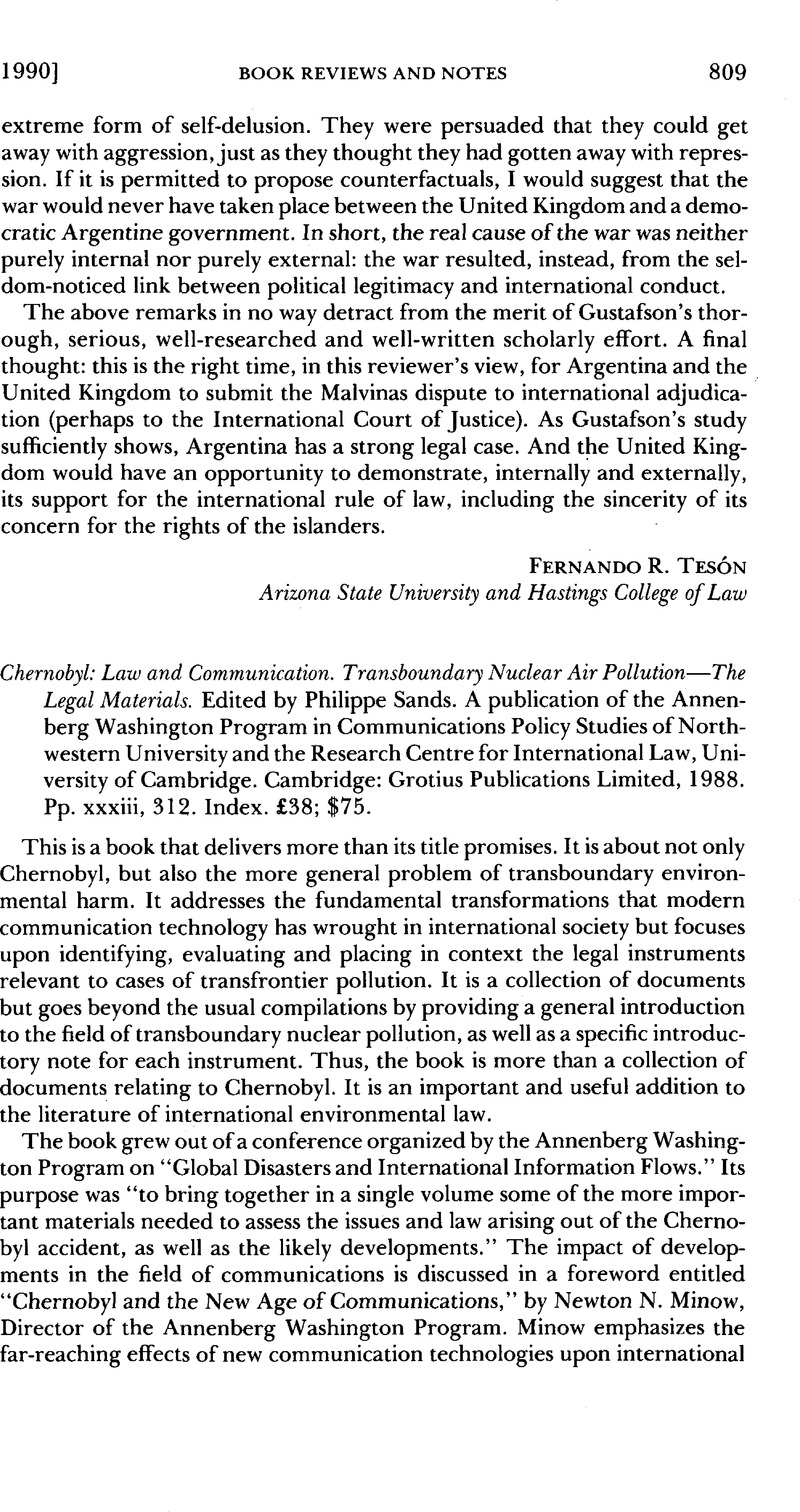No CrossRef data available.
Published online by Cambridge University Press: 27 February 2017

1 In support of this proposition, Sands refers in particular to the Trail Smelter arbitration, UN General Assembly Resolution 1629 (XVI), Principle 21 of the 1972 Stockholm Declaration on the Human Environment, the 1979 Convention on Long-Range Transboundary Air Pollution, the Charter of Economic Rights and Duties of States and the International Law Association’s Montreal Rules on Transboundary Pollution.
2 Of the sources Sands relies upon, only Article 30 of the Charter of Economic Rights and Duties of States specifically mentions the environment, and even there, it is “the environment of other States” that is protected. Taken literally, this would exclude the global commons unless “environment” were given a very expansive meaning.
3 Sands quotes Brownlie to the effect that strict liability is “ ‘essentially a prima facie responsibility, and various defences or qualifications may be available,’ ” while absolute liability is that “ ‘for which there can be no mode of exculpation’ ” (p. 19).
4 In particular, Sands refers to the “Schematic Outline” developed by the late Professor Robert Q. Quentin-Baxter, the ILC’s original special rapporteur for its work on International Liability for Injurious Consequences Arising Out of Acts Not Prohibited by International Law. The Schematic Outline is reproduced in the documents section.